Here are ten reasons to inspire you to explore Dorset in England.
Dorset is one of England’s 27 counties. It is famous for its Jurassic past, the proudly naked Cerne Abbas Giant, and its literary heritage having inspired such eminent authors like Thomas Hardy, Jane Austen, and T.E. Lawrence (widely known as Lawrence of Arabia).
In addition, Dorset is a favourite seaside destination in England. People flock to it to experience the very best of the English summer thanks to Dorset’s spacious beaches on the English Channel, soul-inspiring panoramic views, and a long list of landmarks peppered with fossils, forts, and fantastically beautiful landforms.
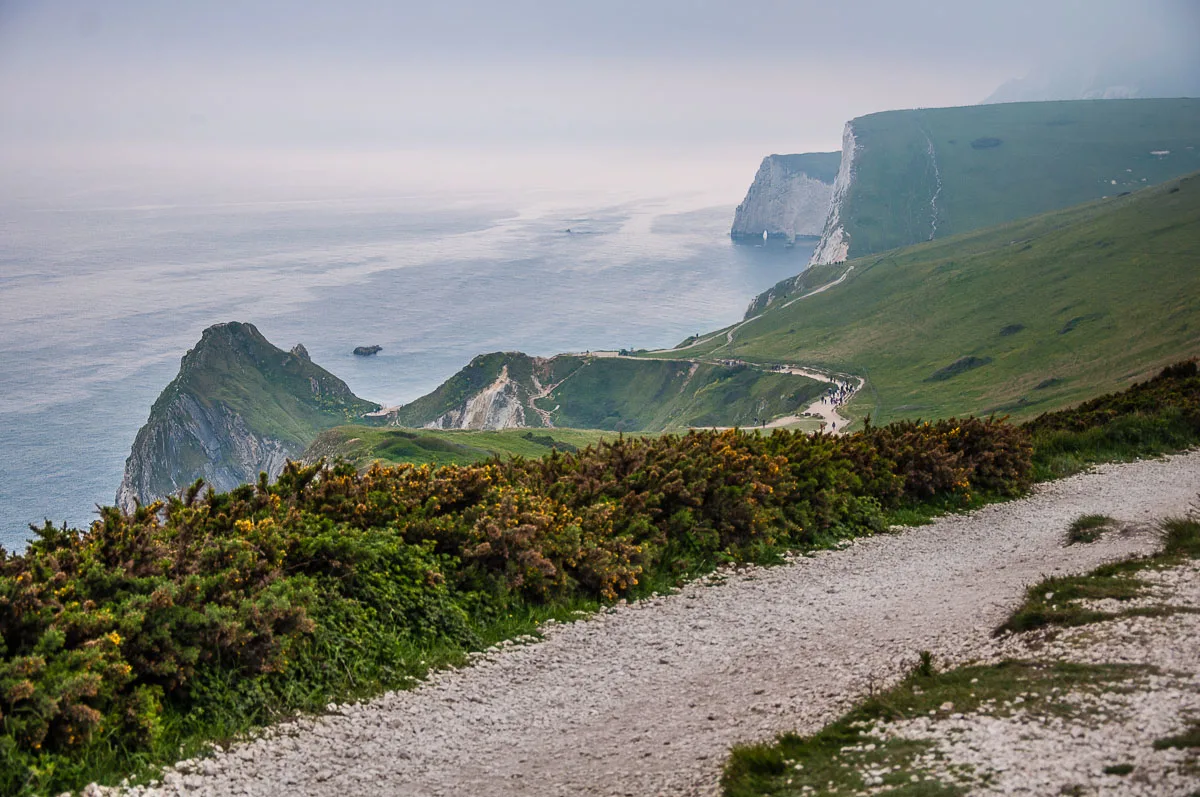
With all there is to do and enjoy in Dorset, this is a must-see county in England. Its picture-perfect villages and lively towns are a great destination for a weekend break or a long holiday. From fresh seafood and local brews to town-wide festivals and events, from well-curated museums to ancient strongholds and imposing castles, Dorset has many points of interest.
I am freshly back from spending six days in Dorset myself. Between a coastal walk to see Durdle Door, catching a crab in Swanage, and enjoying a bowl of wild garlic soup in a historic pub in the model village of Cerne Abbas, I had a wonderful time.
So, in this blog post today I want to share with you the ten best reasons to head out and explore Dorset for yourself. They are based on my first-hand experiences in this beautiful corner of England. I have also included a short section with many practical tips about travelling to and within Dorset. I hope that all this information will come in handy when you are planning your own Dorset adventure.Have a look!
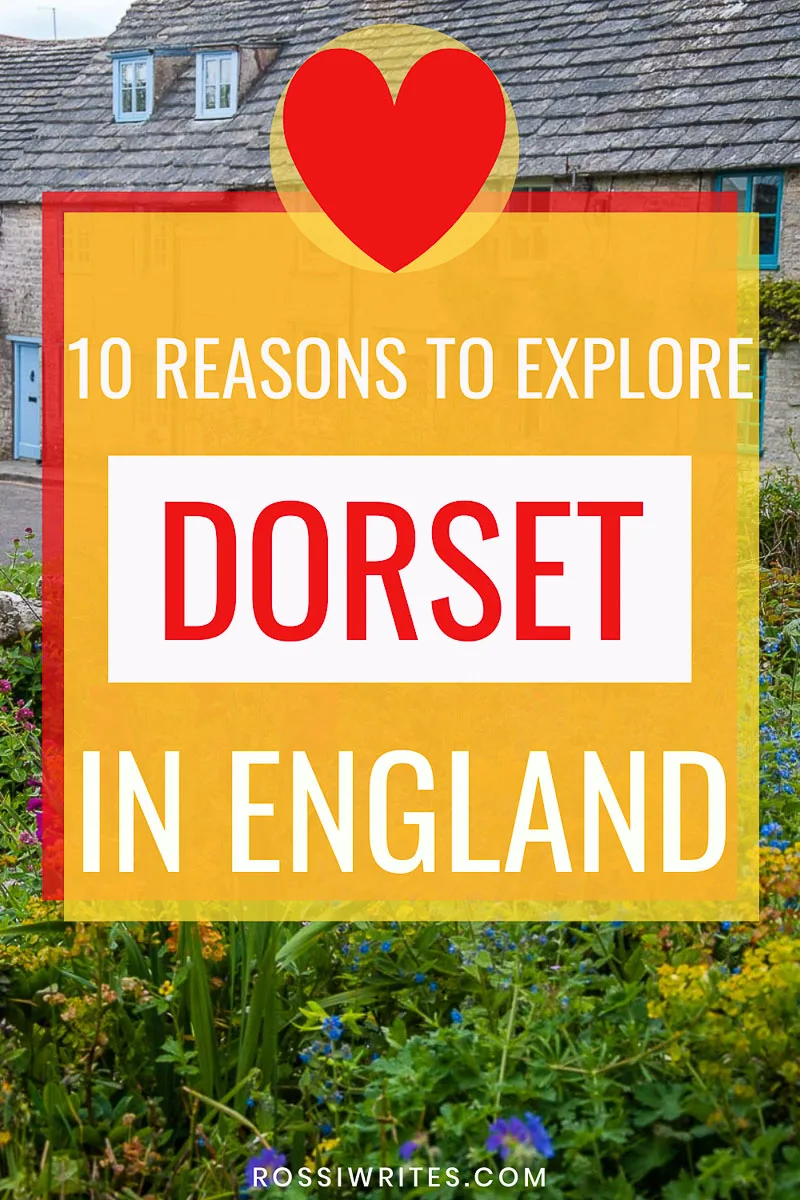
10 Reasons to Explore Dorset in England
1. Dorset’s Jurassic Coast
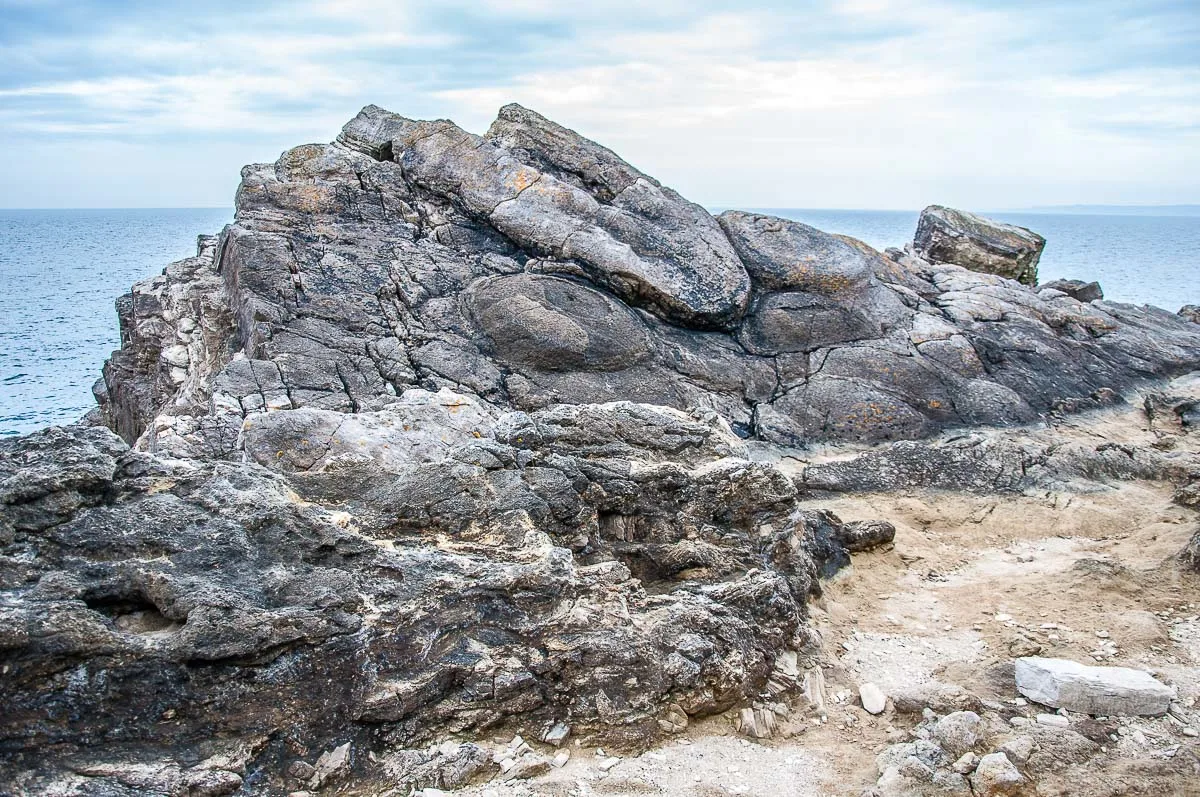
Dorset’s Jurassic Coast is a long strip of coastal land that is known worldwide for the quality and quantity of its fossils and the important geological and paleontological information its rocks and landforms offer. This is England’s only natural World Heritage Site. It was inscribed by UNESCO in 2001.
It was on Dorset’s Jurassic Coast that Mary Anning found the first correctly identified ichthyosaur skeleton in the first half of the 19th century. Anning (1799-1847) was a fossil finder and collector. Her work was defining for the development of palaeontology as a science.
While the Jurassic Coast starts in the neighbouring county of Devon, most of its 95 miles are within the confines of Dorset. It is an area that offers stunning natural formations, an abundance of fossils, and beautiful panoramic views.
We spent our days in Dorset exploring the portion of the Jurassic Coast between the towns of Weymouth and Swanage. My favourite hidden gem here was the Fossil Forest. The sight is rarely open to the public as it’s part of a military firing range. As luck would have it, it was open on the day of our visit. After an uphill walk from the nearby Lulworth Cove followed by 97 steps leading straight down the face of a steep rock, we reached the Fossil Forest – a bare stretch of stratified rock that once had been a lush coniferous forest.
2. Dorset’s Beaches
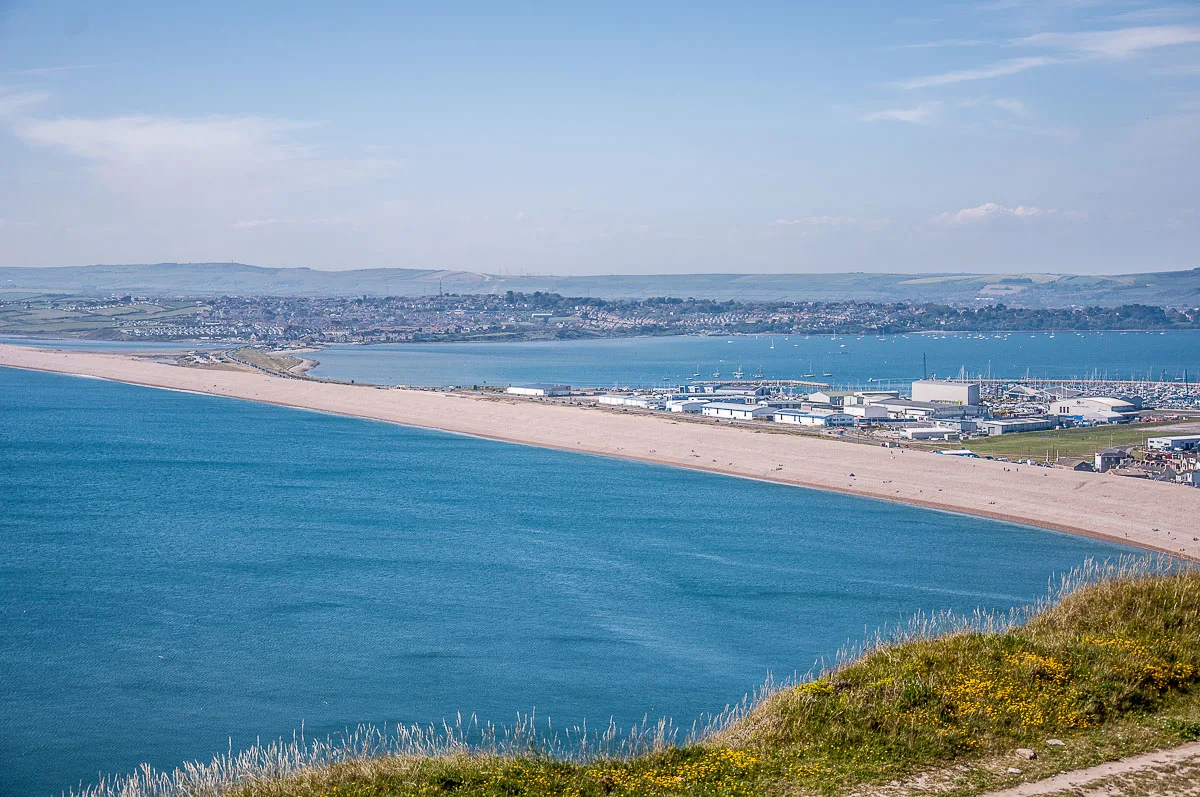
Dorset is blessed with many beautiful long beaches. On a sunny day, people flock to them. In general, the water is rather cold for comfortable swimming but it’s great for a refreshing paddle. There are also a number of water sports to practice here – from paddleboarding to sailing.
Weymouth Beach and Swanage Beach are particularly pretty. Lined up by a beautiful promenade and colourful beach huts, they are a great place to experience for yourself the best of the English sea-bathing traditions.
Among the several Dorset beaches that we had a chance to visit, Chesil Beach was my most favourite. It is also the most dramatic beach I have ever seen. Covered by trillions of pebbles, it looks like an enormous dune and it stretches for 18 miles down Dorset’s Jurassic Coast.
For me, the best view of Chesil Beach was from the top of the Isle of Portland. It is from this high vantage position that you can appreciate how incredibly long and wide this beach is. It’s like a tall barrier, a natural embankment that separates the cold waters of the English Channel from the lush hills of Dorset.
Up to 15 m tall and up to 200 m wide, Chesil Beach’s ridge also protects the Fleet – a brackish lagoon where the world’s largest colony of mute swans lives.
While it is not recommended to go swimming off Chesil Beach on account of the strong underwater current there, the beach is perfect for fishing and for long walks in the company of your thoughts. Up there on the beach’s ridge, you feel at one with Nature. And you begin to understand how incredibly powerful she is and how – in the grand scheme of things – we all are simply tiny pebbles.
3. Dorset’s Unique Places and Landmarks
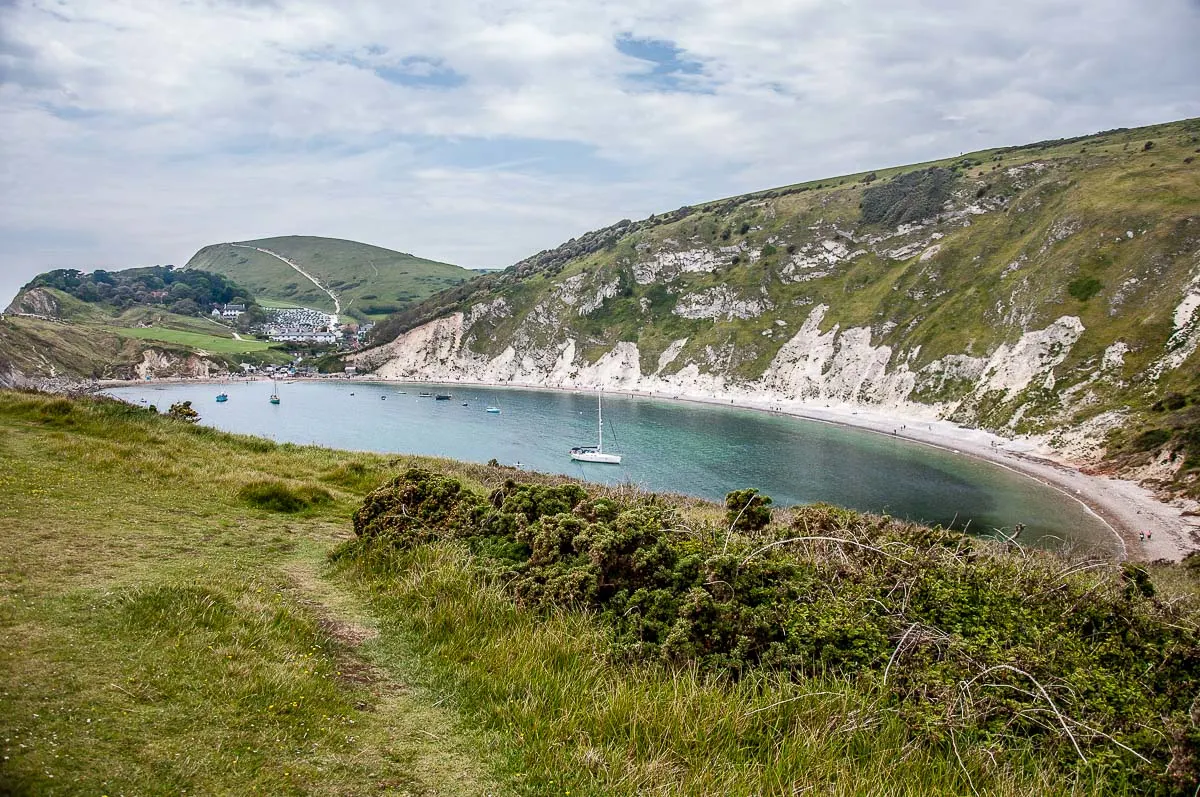
Dorset is rich in unique points of interest. These are places and landmarks that inspire you to travel there specifically to see them. Three of them were on our wishlist for Dorset:
- Lulworth Cove – an iconic cove with crystal clear waters which is surrounded by tall rocks with millions of fossils embedded in them.
- Durdle Door – a natural arch standing in the water next to a beautiful beach.
- Cerne Abbas Giant – a 60 m tall chalk figure etched in the steep slope of a hill.
I am pleased to report that we managed to see them all in addition to so many others. The longer we spent in Dorset, the more information we found about other must-see places and landmarks there.
So, we also managed to see the beautifully conserved ruins of a Roman townhouse in Dorchester, a quarry full of contemporary artworks on the Isle of Portland, a coffee shop in a local prison, a ruined abbey, a saintly water spring, and so many other points of interest. There is also a tank museum and a teddy bear museum in Dorset. As well as a Neolithic cursus, a steam railway, and subtropical gardens.
Dorset is definitely a traveller’s dream. No matter what your interest may be – history or sciences, hiking or local curiosities – there is something new and surprising around every corner just waiting for you to find it.
4. Dorset’s Forts and Castles
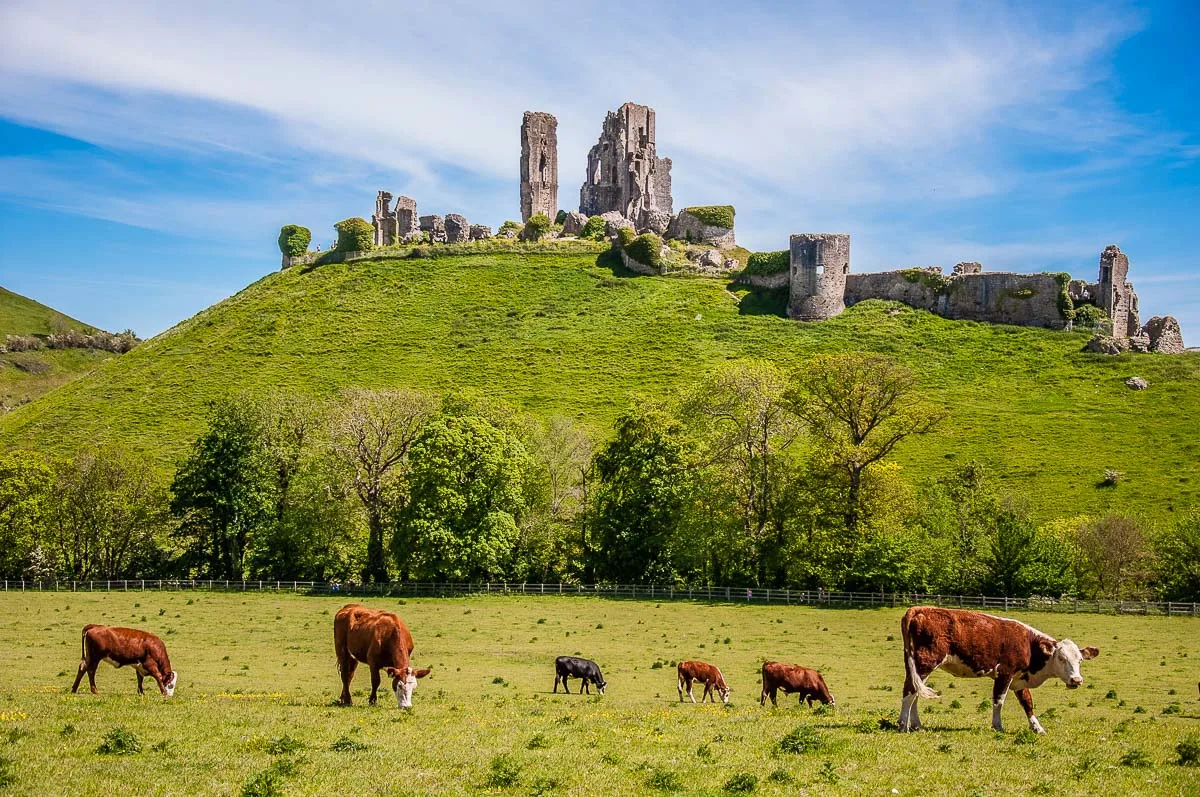
Inhabited since prehistoric times, Dorset is a place dotted with Iron Age hill forts, medieval castles, and military fortifications. Set on top of steep hills or built right on the water edge, visiting them is a great way to learn about the past.
Among the ones we managed to tick off, Corfe Castle was definitely my favourite. With splendid views of Dorset’s verdant countryside, the proud ruins of this once enormous castle are a sight to behold.
I also loved the small coastal castle on the Isle of Portland. Built on the orders of Henry VIII, it affords beautiful views over Portland Harbour. It was interesting to learn a bit about Henry VIII’s military campaigns and preoccupations. I mean, the six marriages of this English king usually overshadow everything else that he did, so it was good to learn a bit about him from a different point of view.
Dorset’s Maiden Castle is a prime example of a Neolithic fortification. This is the largest Iron Age hill fort in Europe! It’s also where the invading Roman Army won a bloody battle against the local Durotriges tribe in the first half of the 1st century AD.
If you love castles, make sure that you also visit Sherborne Castle, Lulworth Castle, and Highcliffe Castle during your visit to Dorset in England.
5. Dorset’s Islands
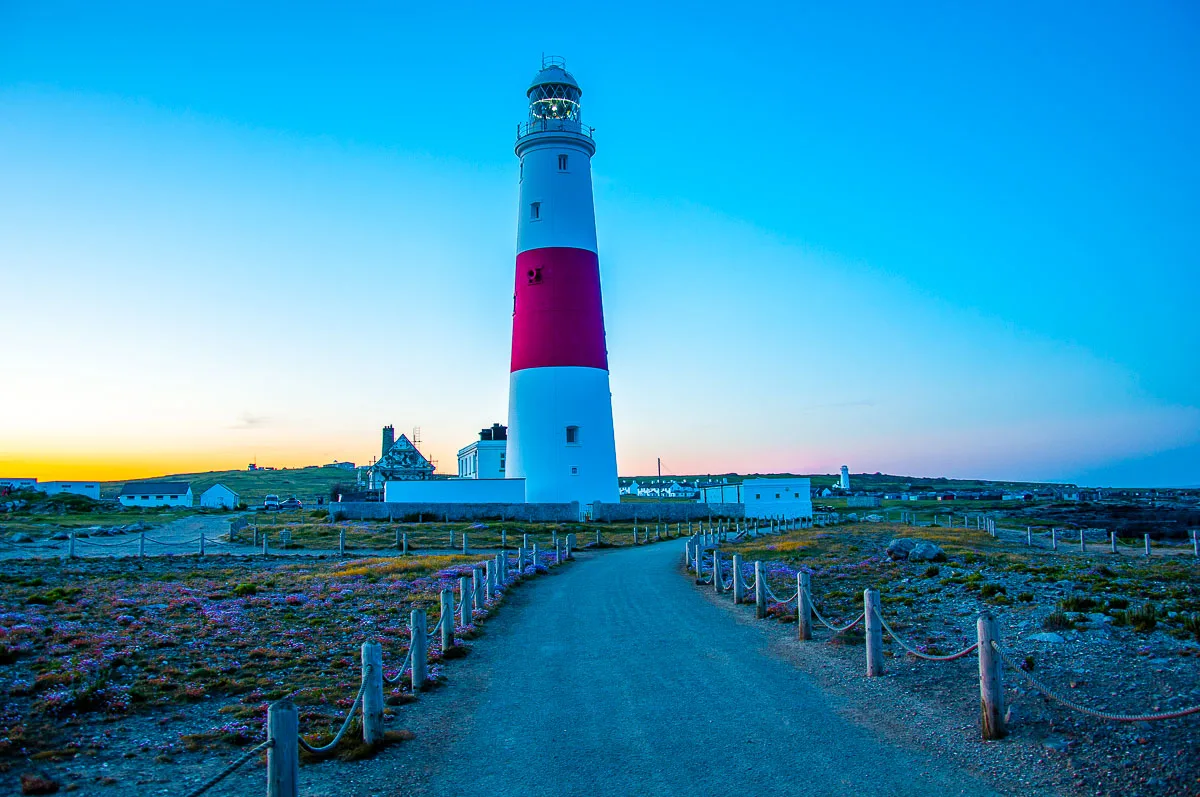
Dorset’s Jurassic Coast evolved over 185 million years. An unimaginably long period of time that led to the creation of some stunning landforms. Among them are some of Dorset’s most spectacular islands.
I particularly loved visiting the Isle of Portland. It is famous mainly for the local Portland stone which has been quarried here for centuries. Many important buildings in England were built with Portland stone. Among them are the Tower of London, St. Paul’s Cathedral and even parts of Buckingham Palace. The Isle of Portland has much more to offer than its stones though. It is a quaint place with curious landmarks and raw natural beauty. It captures your imagination with the stories of its past and your heart with the stunning views it affords over Chesil Beach, the town of Weymouth, and the English Channel.
I also enjoyed my stay on the Isle of Purbeck. Although called an island, this is a large promontory with lots to see and do. The locally-made ice cream is especially famous and as you drive around Purbeck you see large herds of cows peacefully grazing on the green rolling hills.
Brownsea is another Dorset island that is worth a mention and a visit. You will find it in the harbour of the town of Poole – Europe’s largest natural harbour. Brownsea was the site of the first-ever Scout camp and it’s a sanctuary for England’s much-loved native red squirrels.
If you are spending a few days in Dorset, a visit to one of the county’s islands is always a great idea. Each one of them has many hidden corners to explore one by one while learning about the local history, traditions, and nature and falling in love with the beauty of it all.
6. Dorset’s Picture-Perfect Villages
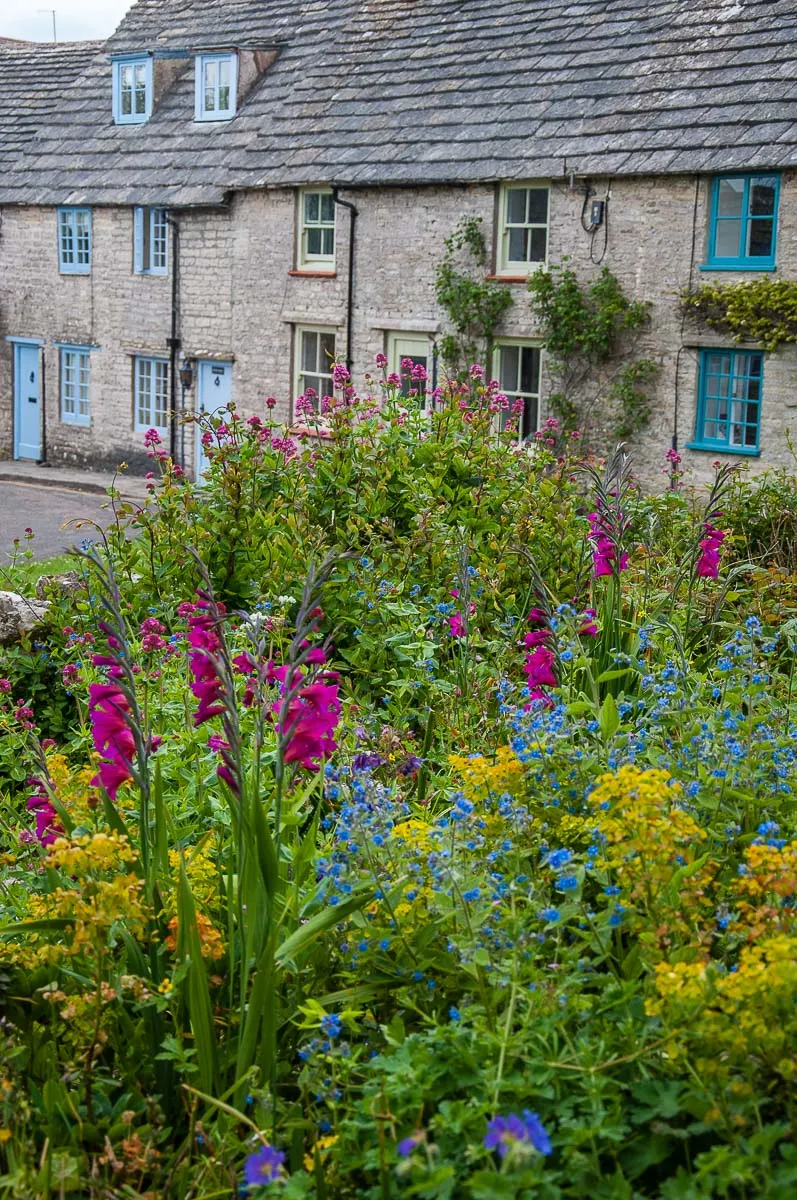
Dorset has many pluses and the local abundance of picture-perfect villages is one of the biggest of them.
Idyllic hamlets of centuries-old cottages with thatched roofs and dry stone walls proliferate here. You just need to get in the car and go for a drive to discover dozens of them. Huddled at the bottom of sunny valleys or spilling down the slopes of tall hills, Dorset’s villages are a great spot to stop, look around, and dream of a quiet life far from the maddening crowds of the big cities.
I particularly loved visiting Cerne Abbas – a gorgeous village with a ruined abbey and a wishing water spring. It’s mostly famous as the Cerne Abbas Giant is right next to it. Yet, the village itself deserves at least an hour of your time, so that you can walk its streets and just take in the beauty of its houses and its picturesque setting.
Worth Matravers is another gorgeous village in Dorset, England. It has a pub with beautiful views across the hills, a central pond where a white duck lives, and nearby you can visit a quarry where over 100 dinosaur footprints have been discovered.
Yet, there are many more villages in Dorset that deserve your time. From Abbotsbury with its largest colony of mute swans in the world and its subtropical gardens to Corfe with its ruined castle and chocolate-box houses, Dorset’s villages are a must-see when you are spending time in this corner of England.
7. Dorset’s Lively Towns
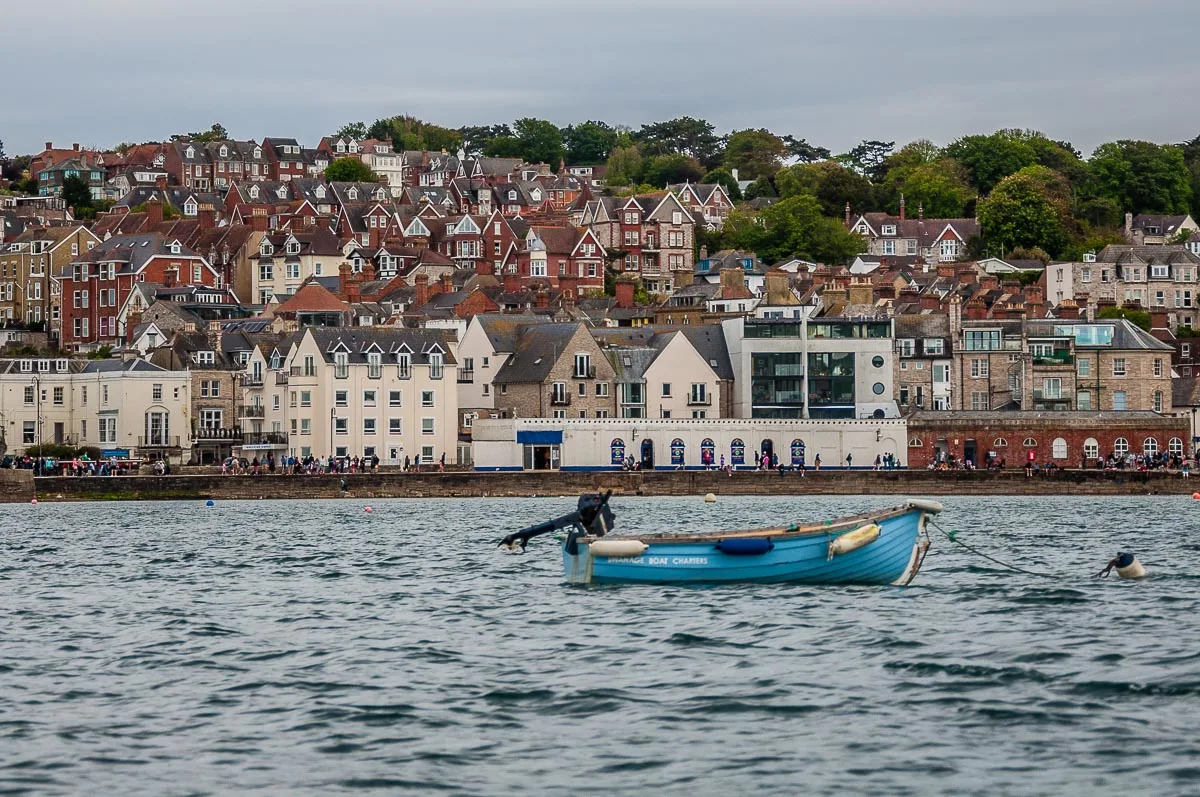
Dorset is blessed with some of the liveliest and prettiest towns that I have had a chance to visit in England. While places of natural beauty and historic landmarks were the focus of our days in Dorset, we also spent a bit of time in three of the county’s main towns – Weymouth, Swanage, and Dorchester.
Weymouth and Swanage are at the seaside. Beautifully laid out around shell-shape harbours, they have all the symbols of an iconic British summer. Colourful beach huts, long promenades, pastel-coloured facades, tall proud buildings with stories to tell from the past couple of centuries or so, small boutiques selling carefully picked wares, bunting flapping in the wind, fish and chips joints, fresh seafood shacks.
Swanage, especially, was such a gem! It felt so relaxed and idyllic there. Kids and parents would congregate on the slipway near the pier to catch crabs! They used pieces of bacon to tempt the crabs and once caught, they would release them back in the water. Local teenagers dove in and out of the cold waters catching spider crabs. They would then show these large, alien-looking animals to the kids on the shore and then release them back.
Dorchester is incredibly posh. This is Dorset’s county town. We popped in there to see the remains of a once-large Roman townhouse. The ruins were beautifully preserved. Illustrations and well-researched text gave us a great insight into what the house must have looked like at its heyday.
Dorset is also where you will find the towns of Poole, Bournemouth, Christchurch, and Lyme Regis. If urban adventures are your thing, then Dorset really knows how to deliver. From museums with well-curated collections to refined restaurants and vibrant local events, there is lots to do and enjoy in Dorset’s towns.
8. Dorset’s Literary Heritage
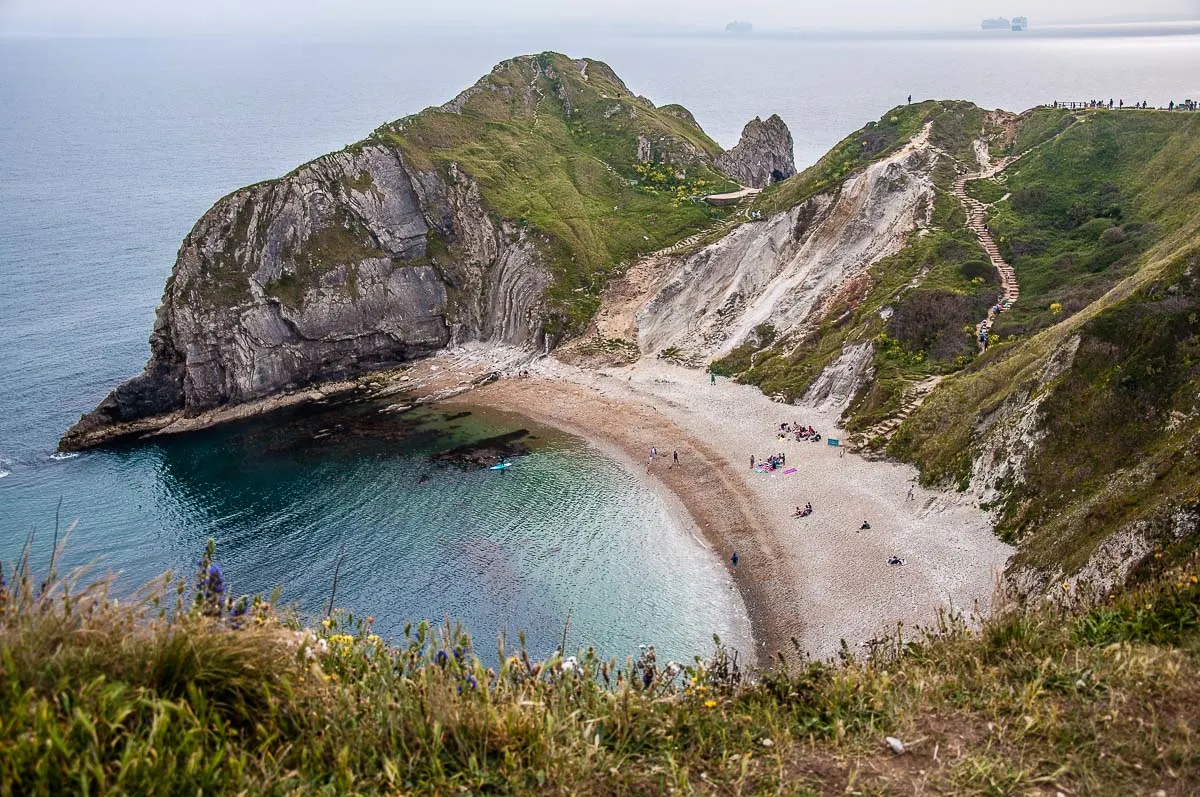
With all the history and beauty that it has to offer, it’s not surprising that Dorset has inspired some of the best English writers and some of the most well-known English novels.
Thomas Hardy was born in Dorset and described in minute detail its landscape and its people in his famous novels Tess of the D’Urbervilles and Far from the Maddening Crowds. I remember reading Hardy’s novels as a teenager and The Mayor of Casterbridge made such a big impression on me.
Nowadays, you can follow the Hardy Trail across Dorset to explore the rural settings of his novels and the places featured in their film and TV adaptations. You can also visit Hardy’s Cottage – the writer’s birthplace – and Max Gate – the house that the writer designed for himself and where he lived until his death in 1928. In Dorset County Museum in Dorchester, you can also see the largest Hardy collection in the world including the writer’s manuscripts, books, and diaries.
Jane Austen wrote Persuasion – her last fully completed book – during a stay in Dorset. The local town of Lyme Regis is one of the main settings in this novel. Moonfleet – a popular kids’ novel about smuggling and adventure – was written at the end of the 19th century by J. Meade Falkner with strong inspirations from Dorset’s Chesil Beach.
T.E. Lawrence (widely known as Lawrence of Arabia) was another of Dorset’s famous literary residents. His grave is in the churchyard of St. Nicholas Church in the small Dorset village of Moreton.
Enid Blythe wrote The Famous Five novel series with Dorset in mind. Many real-life places (like Corfe Castle) were featured in the novels under invented names.
9. Dorset’s Historic Pubs and Brews
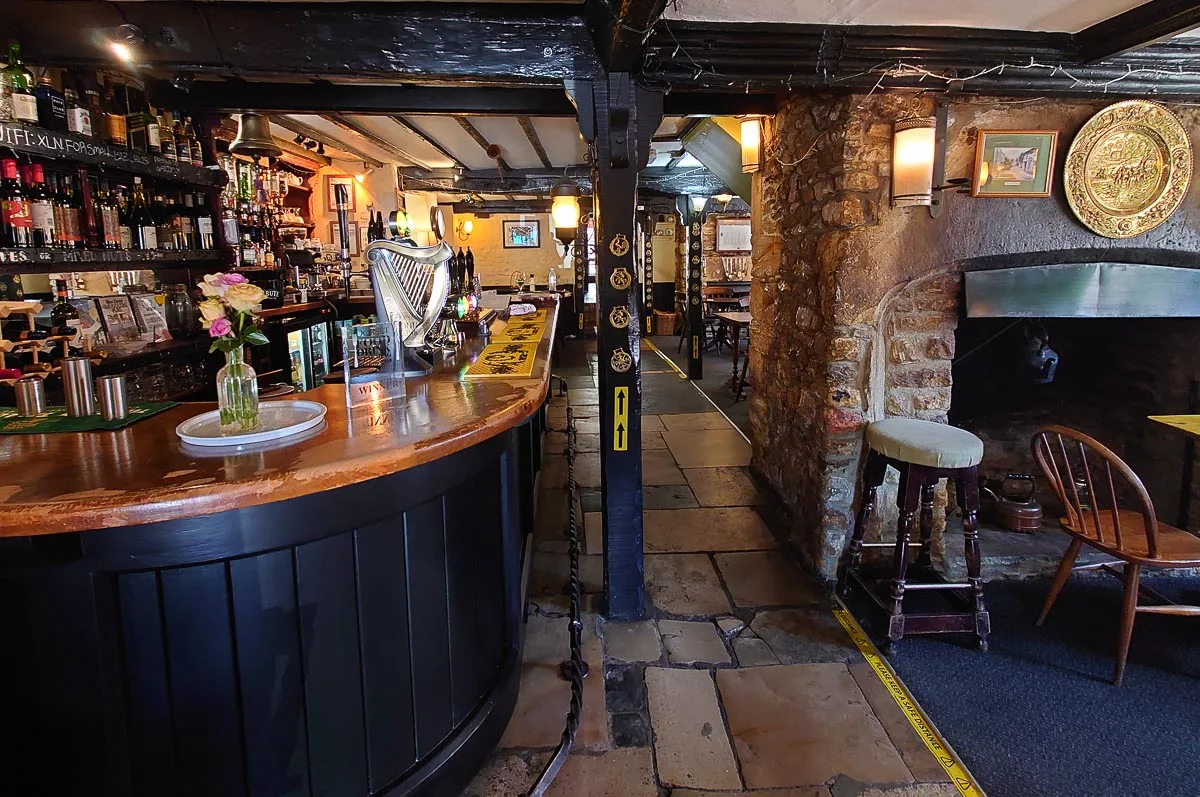
English pubs are renowned all over the world for their unique atmosphere and beautiful buildings. Dorset hosts many outstanding pubs offering great food and local brews often combined with truly stunning panoramic views.
As part of your Dorset experience, make sure that you stop for lunch, dinner, or a drink at a local pub. I particularly loved the Royal Oak in the picturesque village of Cerne Abbas. The pub is housed in a building that dates back to 1540. Just by looking at the beams supporting the ceiling and the worn-out stone slabs on the floor, you could feel the passage of the centuries here.
We tucked into a delicious lunch of wild garlic soup and venison meatballs. I know that English food gets a lot of bad rap yet, believe me, there is nothing like having a meal in the sunlit garden of a historic pub in England!
Travelling around Dorset, we spotted several pubs with a sign depicting a badger. On the last day of our Dorset trip, we drove past a brewery bearing the same symbol. It was then that we realised that this was Hall & Woodhouse – a regional family brewer that has been operating in Dorset since 1777. As we don’t drink, I don’t have a first-hand experience to share about their Badger beer. Yet, centuries of experience stand behind the brand, so make sure that you give the local brew a taste (if beer is your thing!) when in Dorset.
10. Dorset’s Soul-Inspiring Views
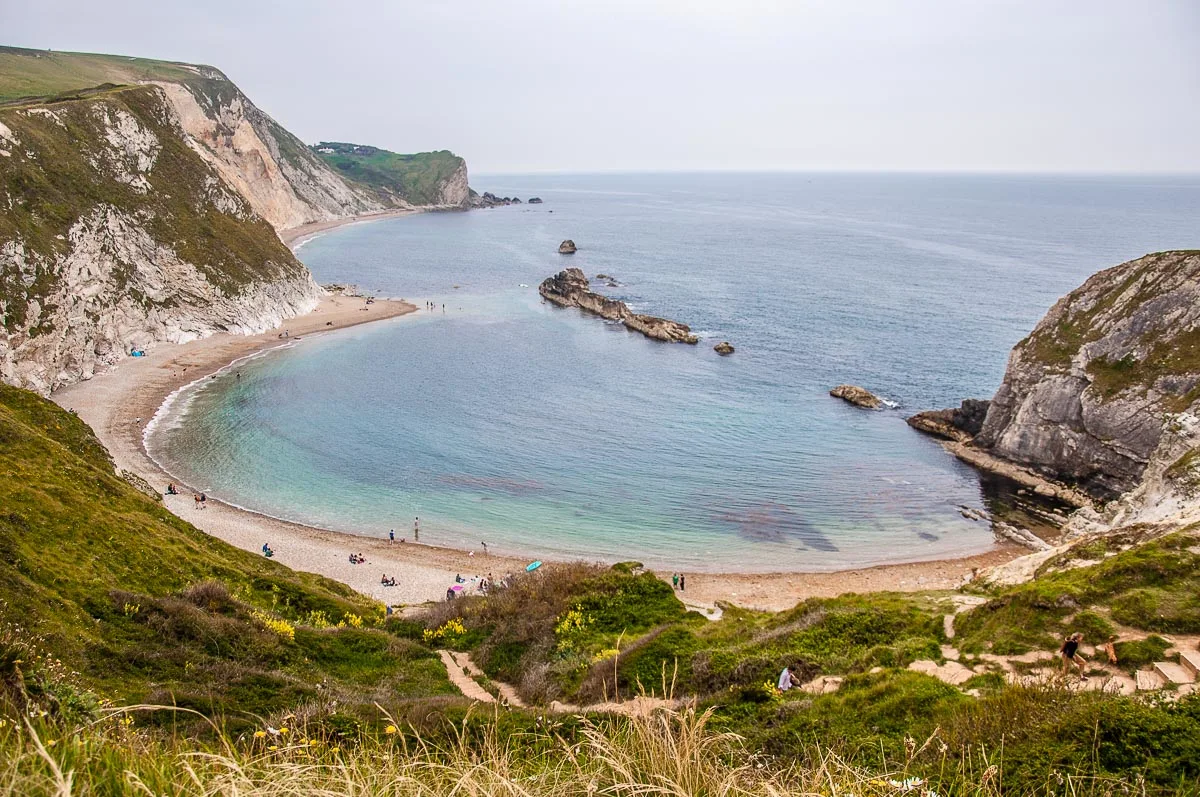
I am going to finish this list of ten reasons to explore Dorset in England with my most favourite one of them all: the heart-nourishing and soul-inspiring views of this English county.
It seems that everywhere you look in Dorset, a gorgeous panorama opens in front of your eyes. It could be the blue expanse of the English Channel against the steep and proud Jurassic Coast. It could be the endless sequence of verdant rolling hills dotted with the whites and the browns of herds of sheep and cows. It could be a shell-shaped harbour lined up with colourful beach huts.
There is so much beauty in Dorset! It’s quite idyllic, really!
And you don’t need to travel far or to a specific destination to enjoy Dorset’s views. Every hilltop here seems to reveal another picture-perfect village with small stone houses. Every narrow winding road seems to be lined by dense hedges peppered with wildflowers and blooming shrubs. Every coastal path seems to offer yet another breathtaking view.
If you have ever dreamed of seeing and experiencing England as they describe it in the books of a century or two ago, Dorset is a perfect destination for you. Here you will find the thatched cottages, the blooming gardens, the dramatic nature, the polite conversation that have come to define England in the collective mind of those who read and love books.
It’s an England that nowadays is very difficult to find in the large English cities. An England that you will be forgiven to think may have never existed outside of the pages of a book. Yet here in Dorset this is exactly the England that awaits you.
Practical Information About Exploring Dorset in England
Where is Dorset, England?
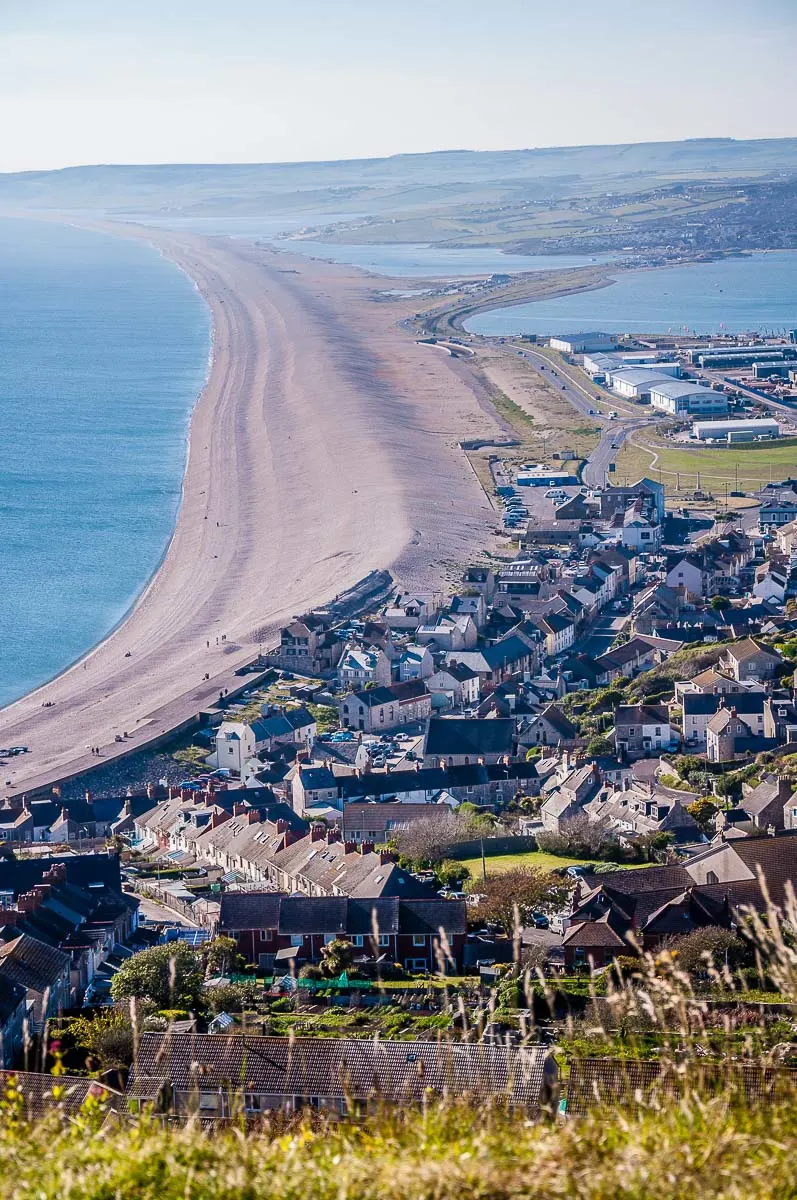
Dorset is a county in England. You will find it in the southwest of the country on the coast of the English Channel. Dorset borders the English counties of Devon, Somerset, Wiltshire, and Hampshire.
Dorchester is Dorset’s county town. In other words, this is the most important town and administrative centre of the county. Bournemouth, Poole, Christchurch, Weymouth, and Swanage are other large towns here.
It took us about four and a half hours to reach Weymouth from Kent where we currently live. Google Maps had predicted a travel time of about three hours but after a traffic jam along the way and stopping for a light lunch further down the road, we ended up spending longer in transit.
How to travel to and within Dorset, England?
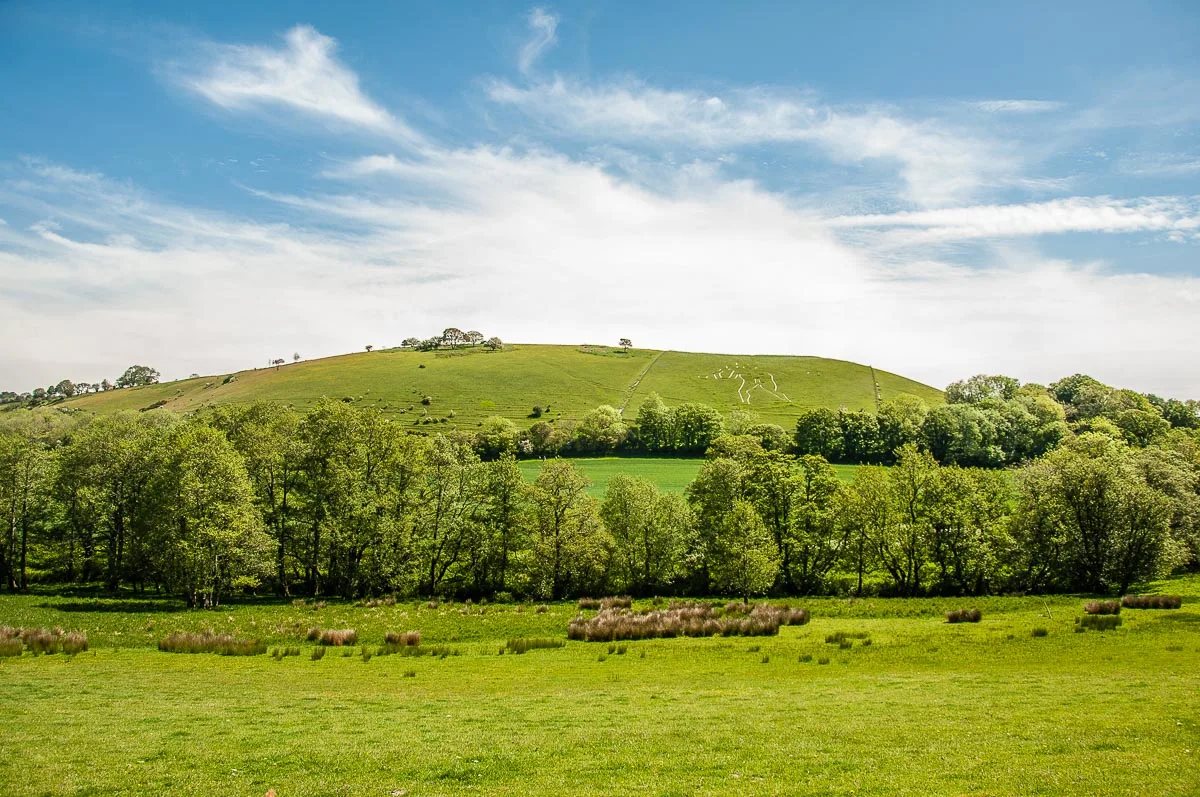
On average, you need between two and three hours to reach Dorset from the British capital London. Travelling times depend strictly on your points of departure and arrival and may stretch considerably depending on the day and the season.
Public transport is well-developed in England and you can rely on trains and buses to get you almost everywhere here. It is especially easy to travel by train or bus from one large city or town to another.
You can use Google Maps to easily check travel distances and times. Click here to check public transport options and to buy tickets for trains and buses.
Having a car at your disposal is the best way to explore Dorset if you don’t want to depend on public transport and/or want to head to the more rural corners of this English county. Click to explore car rental options for your trip to Dorset in England.
We travelled by car which gave us lots of flexibility in terms of sightseeing and discovering hidden gems all over Dorset. I particularly loved travelling on the narrow curving roads there. Bordered by high hedges with flowering shrubs and plants, it was an incredibly beautiful way to see Dorset. Lush rolling hills stretched ahead to the horizon. Small villages with thatched cottages and dry stone walls popped along the way. Suddenly, the blue expanse of the sea would appear in front of us. It was all so peaceful and idyllic.
When is the best time to visit Dorset, England?
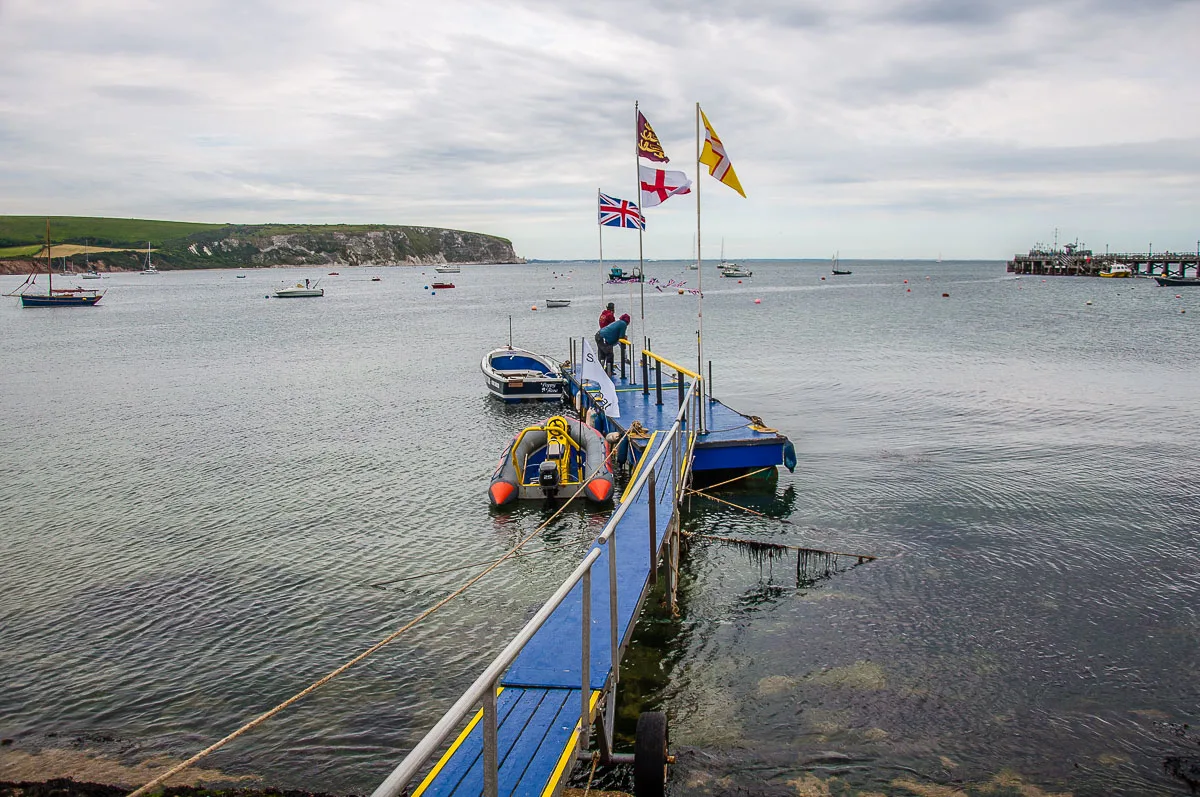
Dorset is a very popular summer and holiday destination in England. Hundreds of thousands of people flock to this beautiful county every year. The high season runs from June to October. In July and August, you can expect average temperatures of 18 degrees Celsius and limited rainfall.
With its oceanic climate in the southwest of England, Dorset offers long and pleasant summer days. The sun rises early and sets down late thus offering you many hours of light to explore the many local points of interest. In the coastal areas of Dorset, a lovely fresh breeze offers respite even on the hottest of days.
At the same time, Dorset doesn’t get exceedingly hot. If you are tired of the scorching temperatures of the Mediterranean destinations, for example, in Dorset you will find much more moderate and easy to deal with climate even at the height of summer. This way you can hike, sightsee, and tick off local landmarks all throughout the day instead of hiding inside every afternoon to escape the burning sun.
The downside is that the temperature of the seawater is traditionally quite cold. In June, it fluctuates around 13-14 degrees Celsius. It is only on the hottest days of July and August that it can approach or exceed 20 degrees Celsius.
During our visit to Dorset, we enjoyed several very sunny and warm days and a couple of drizzly mornings. I found the temperature to be perfect for hiking and exploring around. The breeze in the coastal areas was so beautifully refreshing and it kept us going even after a long day of walking.
After spending six years in Italy, where June is marked by very high temperatures and blindingly bright sunlight, it was such a pleasure to have a cooler, pleasant early summer experience in Dorset. We didn’t have to retreat to our room in the afternoon, we didn’t need an air-con, and even when it rained, it wasn’t for long and a light waterproof layer kept us dry, and comfortable.
What to pack for Dorset, England?
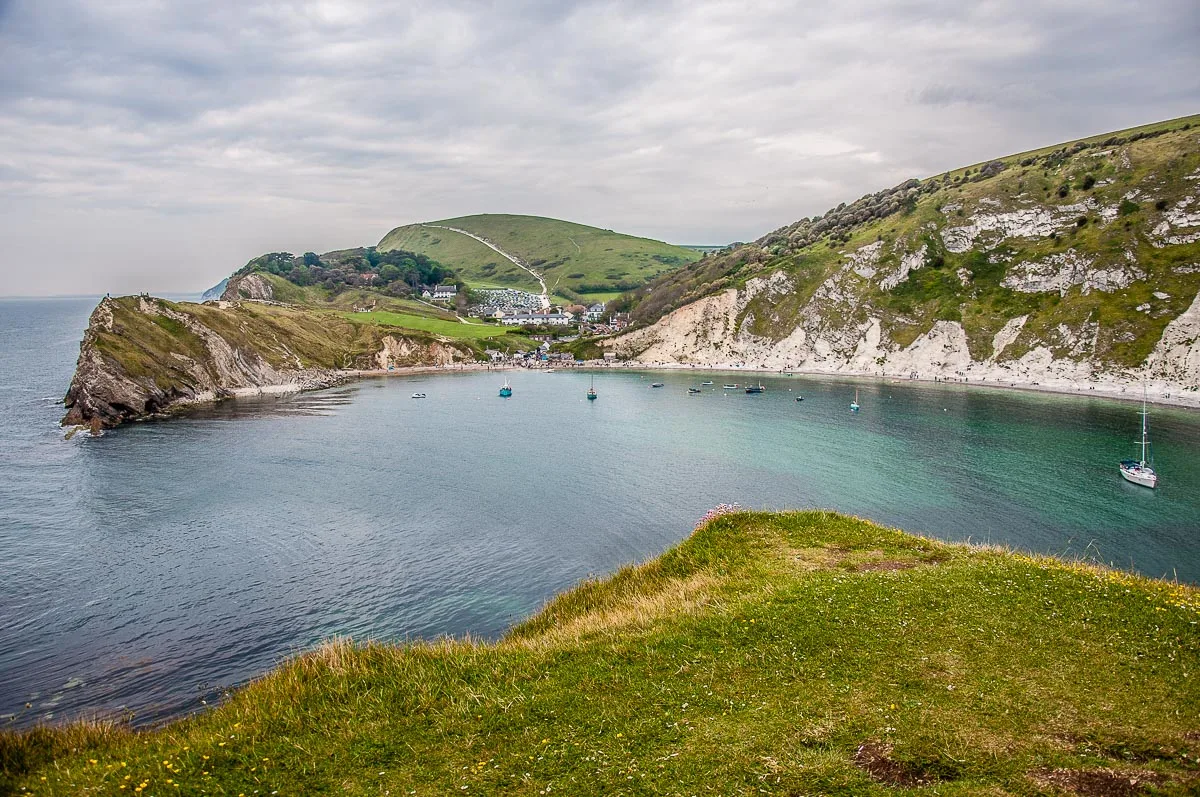
A good quality suncream and a light waterproof jacket come in very handy during the high season in Dorset. Hiking boots are a must if you want to spend time exploring the local coastal walks.
A wetsuit (especially for children) is advisable if cold water makes you shiver and yet you want to paddle in the sea.
My light waterproof jacket came in very handy when it drizzled during our stay in Dorset. It was also very useful when we hired a small boat for a self-guided cruise of Swanage’s harbour. Suncream was a must for us in Dorset. My husband and child are very pale and while I have an olive complexion and don’t burn easily, after our first day there my face needed some TLC. So, yes, while Dorset’s early summer is not half as hot as in Italy, for example, suncream needs to be applied regularly.
We went to the beach a couple of times and the water was cold. It doesn’t make for comfortable swimming at all but it’s lovely for paddling. The local shops and supermarkets sell wetsuits. So, even if you don’t pack one, you can always get one on the spot.
Where to stay in Dorset, England?
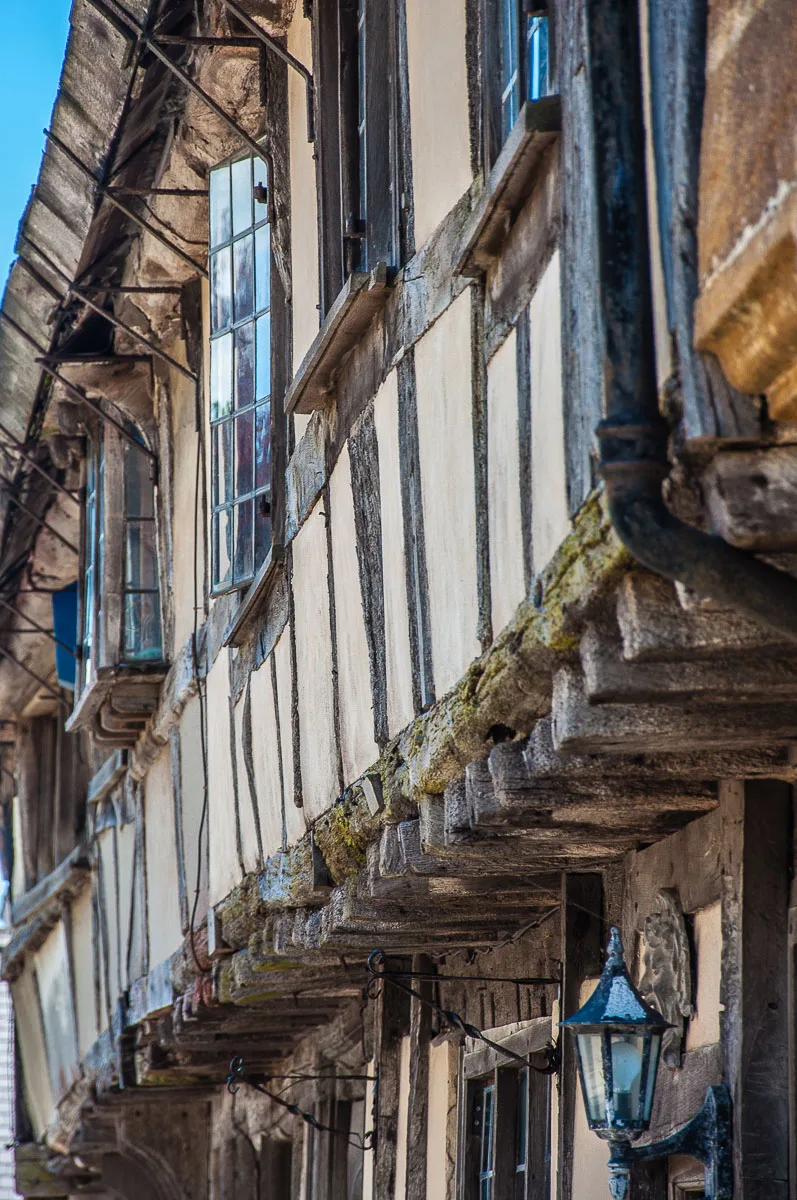
Dorset has a wonderfully varied list of accommodation options. From cute cottages with thatched roofs to luxury hotels, from camping sites next to rural farms to cozy B&B’s, there is something for everyone here.
As we wanted to cover a lot of ground and see many points of interest in Dorset, we booked two B&B’s and a campsite for our five nights there. In the first B&B, we stayed for a night. It was a comfortable place near Chesil Beach where we relaxed after our early morning drive down from Kent followed by a hectic day exploring the Isle of Portland.
Next, we moved to a camping site on a working farm. Surrounded by animals (from donkeys to emus!) and with a great farm shop, we relaxed in the bosom of nature and a stone’s-throw away from the splendid Corfe Castle. The last two nights of the trip we spent in a no-frills B&B next to a horse riding school in Dorset’s lush countryside.
Although this moving around meant that we had to pack and repack the boot of the car a few times, it also gave us a good feel for the different types of accommodation and environments in Dorset. It also made each member of our small family happy in different ways.
This map gives you a quick visual idea of the price ranges of the many hotels and other forms of accommodation you can book for your stay in Dorset in England. You can zoom in and out in order to narrow or expand your search. You can also click on the option that interests you to find out more details or to make a booking:
What are some great tours and activities to book in Dorset, England?
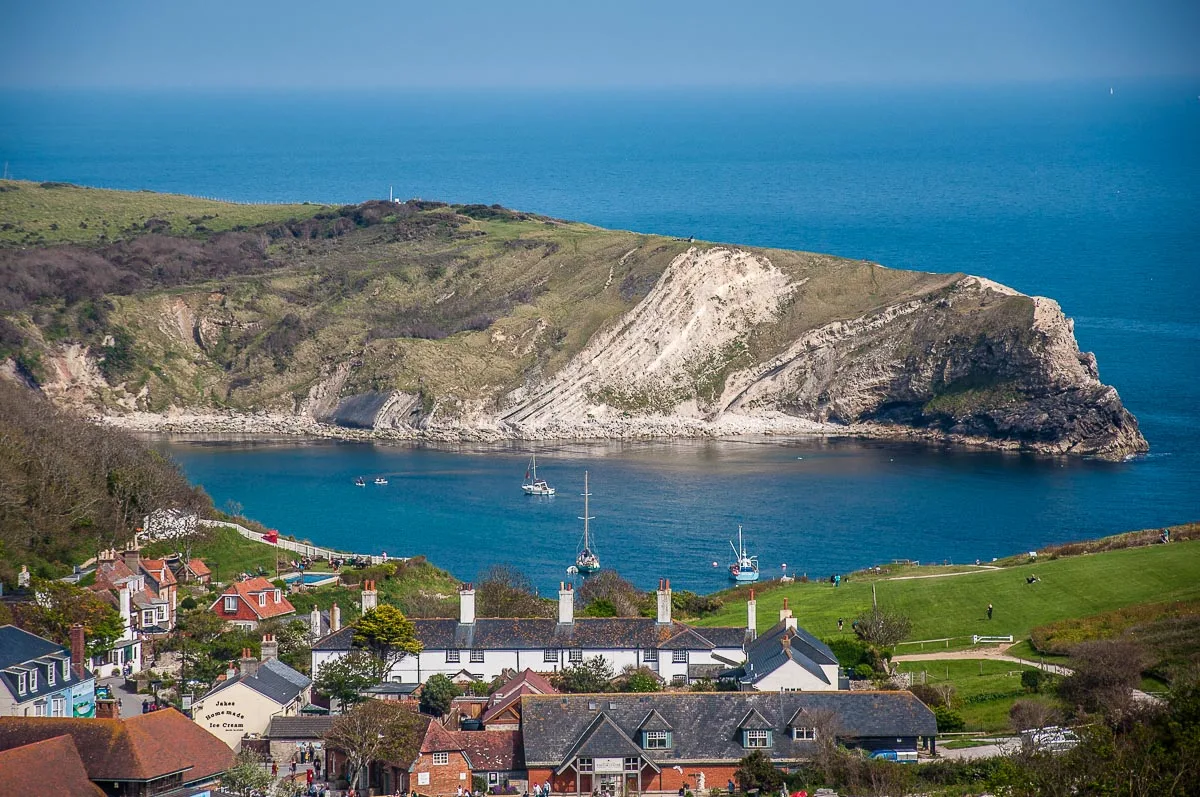
There are many wonderful tours and experiences that you can join in Dorset, England. Click here to see a long list with some great suggestions and here to search for specific sights and destinations in Dorset.
Joining an activity is a great way to get to do and see things in an organised manner. This way you won’t waste time nor worry about getting lost or missing an important landmark. Picking one or more tours and experiences can also help streamline your sightseeing plans for Dorset in England. Especially, if you are only spending a limited amount of time there.
In Conclusion
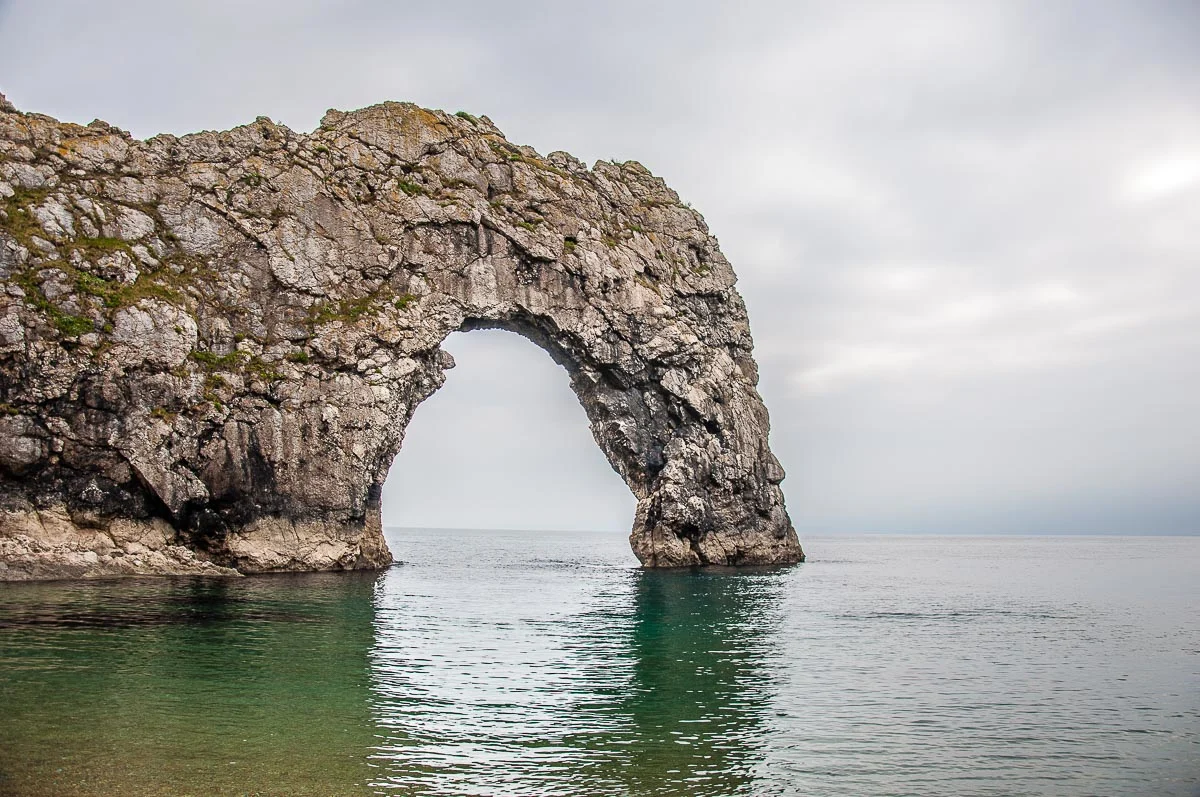
I hope that you enjoyed reading my ten reasons to explore Dorset in England. I loved discovering Dorset for myself. It’s certainly one of the most idyllic places I have visited so far.
Picture-perfect villages, lively towns, gorgeous panoramic views, and a dramatic coastal line… You can find them all (and so much more) in Dorset to keep you delightfully busy during a weekend break or a longer holiday.
If you have ever dreamed of finding a place that appeals to your interests in history and science, your sense of beauty, and your idea of a postcard-perfect England, Dorset is a great destination to head to. From its rich in fossils and beautiful landforms Jurassic Coast to its literary heritage and historic landmarks, there is so much to do and see in this English county.
So, I hope that the first-hand information and practical tips provided above will come in handy during the planning stages of your trip to Dorset!
Enjoy exploring Dorset in particular and England as a whole!
Now, get ready quick for your exploration of Dorset, England!
- Consult these guidebooks.
- Buy plane tickets to England.
- Book train tickets, bus tickets or rent a car.
- Research accommodation.
- Select local tours and activities.
More Helpful England Links for You
Travel in England: Best Towns in England
London: Free Things to Do
Cambridgeshire: Cambridge
Cheshire: Chester
Isle of Wight: Alum Bay, Carisbrooke Castle, Osborne House, Pepperpot, Round the Island Race, St. Catherine’s Lighthouse
Hertfordshire: St. Albans Cathedral
Kent: Kent Life
Northumberland: Lindisfarne
Sussex: Wakehurst
English Lifestyle: Differences Between the English and the Italians, Memorial Benches, Allotments, Charity Shops, Beachtime
English Food: Fish and Chips
Thank you for reading! Please, leave me a comment, pin the images below or use the buttons right at the top and at the end of this blog post to share it on social media.
For more useful information like this, please, like my blog’s page on Facebook and subscribe to my strictly no-spam newsletter.
[mks_col]
[mks_one_half]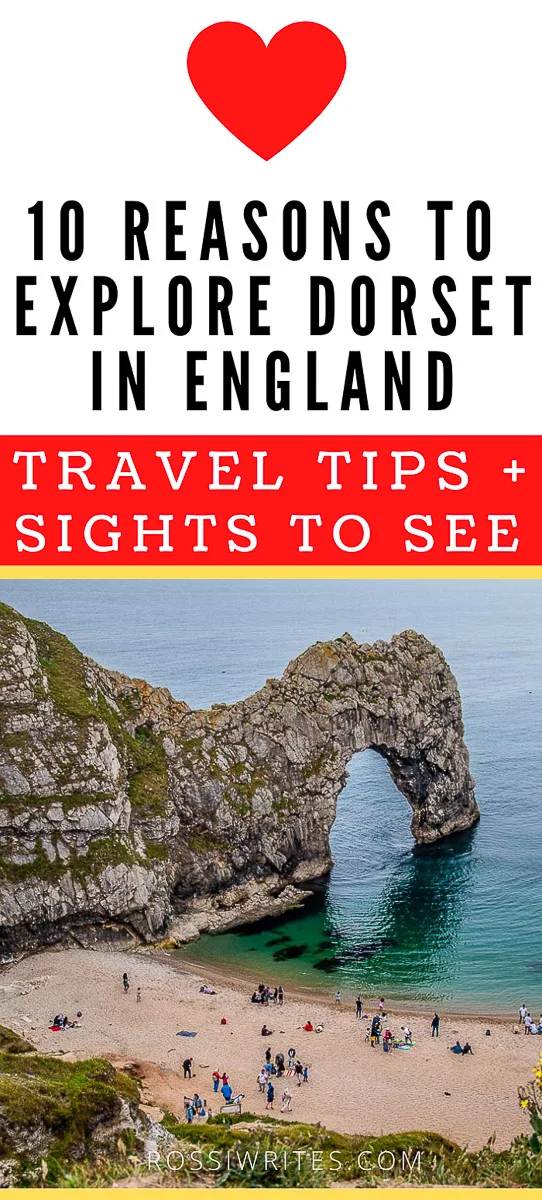 [/mks_one_half]
[/mks_one_half]
[mks_one_half]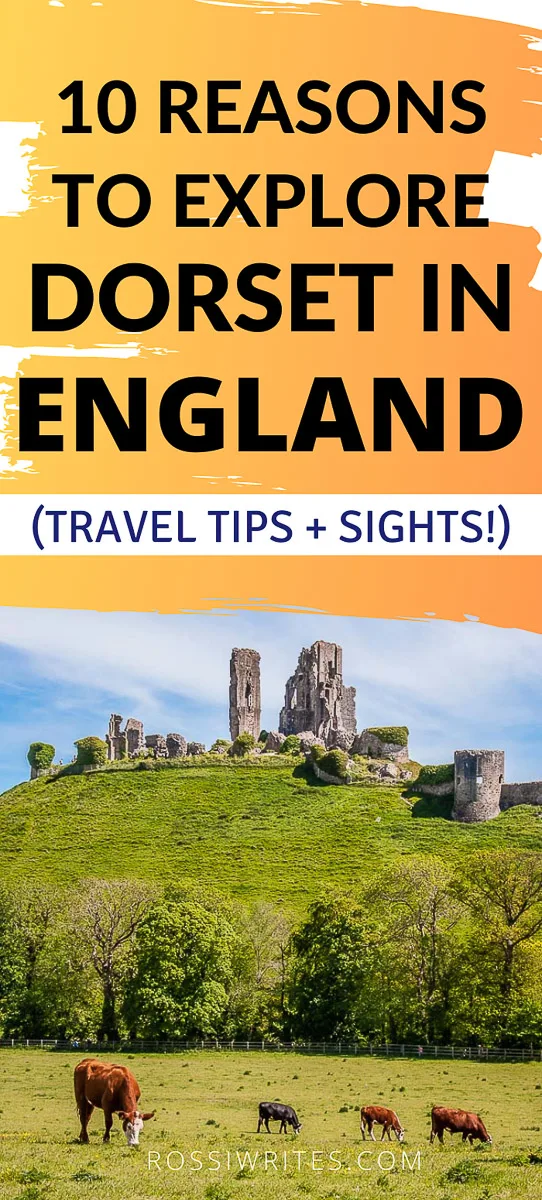 [/mks_one_half]
[/mks_one_half]
[/mks_col]
